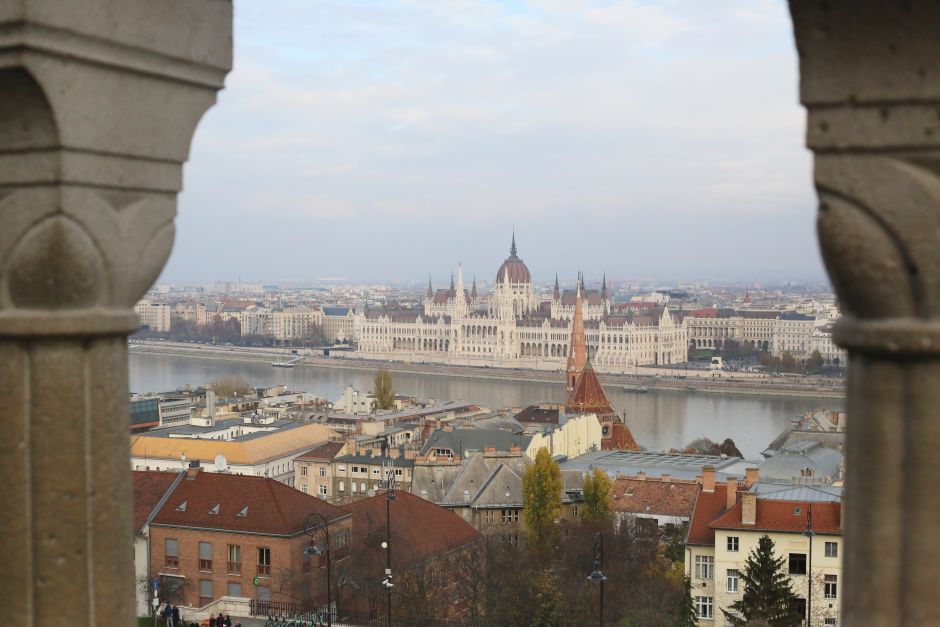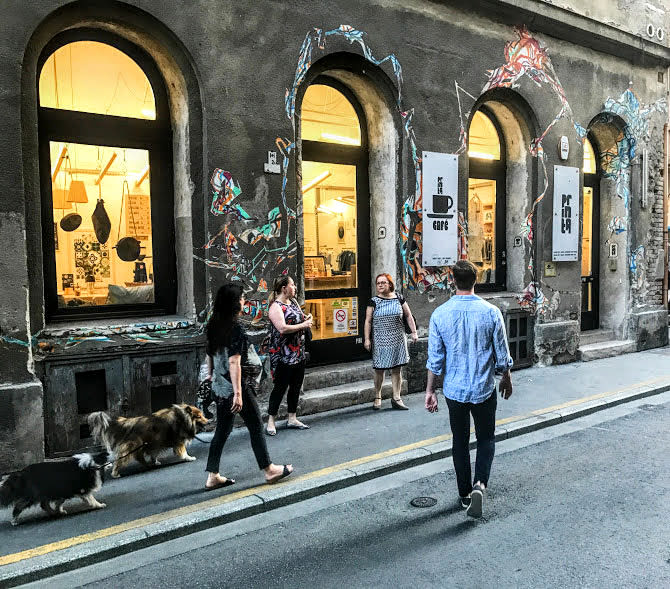Familiarizing yourself with the main pockets of the city will help you get the most out of your visit.

For hundreds of years, Buda and Pest were separate cities until their official union in 1873, which also included Óbuda, a small town just north of Buda. Split by the Danube, Buda sits atop softly rolling hills that are home to well-heeled residential neighborhoods and to the medieval old town on the Castle Hill. On the flat terrain across the river stretches out the livelier and more crowded Pest, known for its eye-catching architecture and vibrant nightlife. The majority of Budapest's 1.8 million residents live on the Pest side and that's where most of the 23 administrative units, known as districts, are located.
In fact, most restaurants, bars, stores, museums, and tourist attractions are also in Pest — as a visitor, it makes sense to make Pest your home base and selectively venture out to the interesting parts of Buda. The best way to discover the central parts — Districts 1, 5, 6, 7, 8, 9, 11, 13 — is by foot. For some of the more far-flung locations you can use the BuBi city bikes on the flat Pest side or take public transportation which is clean and efficient. (This article summarizes the best ways to get around, including options to and from the airport.)

There isn’t any one neighborhood in Budapest that's categorically fancy or elite. Instead, most areas include both lower and middle-income residents as an incidental legacy of the Communist era (1947-1989) when the forced evictions and the parceling up of apartments totally reshuffled the local population. Nonetheless, leafy Buda, especially parts of District 2 and District 12, is considered most upscale apart from bits of downtown. Budapest is a safe city, so you don't need to worry about looking over your shoulder in any part of town.
For specific ideas about what to see, refer to this list, which features places across many neighborhoods, or peruse our district-level guides.
My content is free and independent. If you've enjoyed this article, please consider supporting me by making a one-time payment (PayPal, Venmo).
The Pest side
In Pest, the main points of interest are within the Grand Boulevard ("Nagykörút"), but it's also worth exploring the wider city to see where most residents live.
Thanks to the rising number of tourists, downtown Pest (District 5) is beginning to show the signs of typical tourist-heavy city centers, teeming with hotels and restaurants catering to all types of travelers. For splurgers, there's a Four Seasons and a Ritz-Carlton, and most Michelin-starred restaurants are also in District 5. Váci utca is downtown's main pedestrian street — think of it as Budapest's La Rambla — meaning that overpriced tourist-menu restaurants and souvenir shops abound. Proceed with caution. Downtown's well-known landmarks include the Hungarian Parliament building, the St. Stephen's Basilica, and the Shoes on the Danube Bank. There are also cute, uncrowded side streets to get lost in.

The highlight of Terézváros (District 6) is Andrássy Avenue, the fancy boulevard known as "Budapest's Champs-Élysées." It connects the city center with Heroes' Square, offering plenty of shopping along the way. The old Jewish Quarter today is home to Budapest's famed ruin bars and it's the center of nighlife. Little of the neighborhood's Jewish past has remained save for three synagogues, including Europe's biggest in Dohány Street. The Palace Quarter (District 8) has striking pre-war mansions and cute cafés nestled on quiet streets. Ferencváros (District 9) sets off by the Great Market Hall and features top museums and a panoramic Danube promenade. Újlipótváros (District 13) is a lively and well-off residential area with modernist architecture from the 1930-40s and plenty of hip cafés. A bit further from the center is Zugló (District 14) whose lively farmer's market and beautiful houses can be worth a visit.
The Buda side
In Buda, most people visit is the medieval old town on Castle Hill (District 1) with the Buda Castle and the Matthias Church. Try to go early in the morning or in the late afternoon to avoid the crowds and have these winding historic streets to yourself. Perched atop the neighboring Gellért Hill is the Liberty Statue. If you don't mind a steep hike, climb up here for sweeping, 360-degree views. Most of the city's thermal baths are also in Buda (Rudas, Gellért, Lukács, and Király). Újbuda (District 11) is an increasingly popular neighborhood known for its art galleries, cafés, and positively bourgeois air.